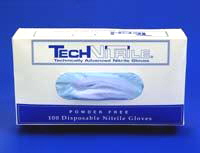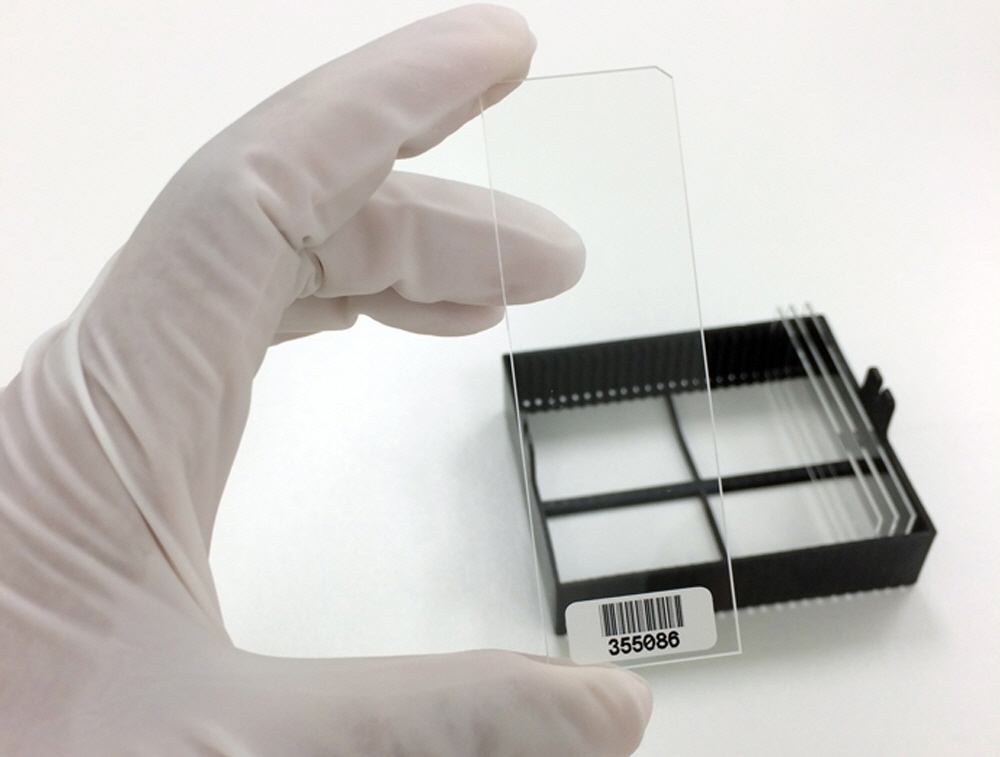Cleanroom Gloves
Data Sheet
![]() Shop this product in our online store Size Small
Shop this product in our online store Size Small
![]() Shop this product in our online store Size Medium
Shop this product in our online store Size Medium
![]() Shop this product in our online store Size Large
Shop this product in our online store Size Large
![]() Shop this product in our online store Size Extra Large
Shop this product in our online store Size Extra Large
Synthetic nitrile, ultra-low particulate chemically-resistant microarray cleanroom gloves for the most exacting cleanroom applications. Use these gloves when handling microarray pins, printheads, robots, scanners, substrates, slides and all other items that require latex-free gloves. Ideal for all for research, microarray life sciences, diagnostics, healthcare and semi-conductor applications.
Products - Microarray Cleanrooms - Cleanroom Gloves

Arrayit provides the market’s finest synthetic nitrile, ultra-low particulate microarray cleanroom gloves for microarray cleanrooms, pin and printhead handling, and other exacting microarray applications as well as extensives applications in research, life sciences, diagnostics, pharmaceuticals, healthcare and semi-conductors. Our new white nitrile gloves available in all sizes set a new standard for ultra-low hypoallergenicity and compliance with the most stringent biotechnology and semi-conductor environments including class 1 cleanrooms.
Table of Contents
- Introduction
- Quality Control
- Product Description
- Technical Note
- Technical Assistance
- Short Protocol
- Complete Protocol
- Recommended Equipment
- Troubleshooting Tips
- Ordering Information
- Warranty
Introduction
Congratulations on taking a big step towards improving the economies of scale, quality and speed of your microarray cleanroom research. This booklet contains a complete set of illustrations and protocols outlining the steps and principles needed to use Arrayit Microarray Cleanroom Gloves (MCGS, MCGM, MCGL, and MCGXL).
Quality Control
Arrayit assures the performance of this product. The finest scientific research went into the development of this product. Rigorous quality control monitoring on a lot-by-lot basis guarantees that these cleanroom gloves conform to the highest cleanroom industry standards.
Product Description
Arrayit's Arrayit Microarray Cleanroom Gloves (MCGS, MCGM, MCGL, and MCGXL) provide the highest quality synthetic nitrile cleanroom gloves at an affordable price, and are free of the latex proteins that can severely contaminate cleanrooms if normal latex gloves are used. All of our cleanroom gloves are packaged in state-of-the art class 1 cleanrooms, eliminating contamination of the gloves with particulates, proteases, nucleases and other contaminants that impair the quality of microarray experimentation if non-cleanroom gloves are used. Compare our cleanroom gloves with traditional laboratory gloves and you will see the difference.
Users will appreciate the following features of Microarray Cleanroom Gloves (MCGS, MCGM, MCGL, and MCGXL):
- Packaged in advanced class 1 cleanrooms
- Ideal for biotechnology and semi-conductor manufacturing
- Free of latex proteins and powder
- Free of particulates, proteases and nucleases for maximum biological compatibility
- Free of harmful chemicals for maximum user safety
- Ultra-low emission of volatile and surface organics
- Four sizes (small, medium, large, and extra large) to fit all cleanroom personnel
- Convenient 100 gloves per package
- High-tech synthetic nitrile composition
- New gloves feature white nitrile for ultra-low hypoallergenicity
- Ambidextrous for ease-of-use
- Reinforced cuff for extra durability
- Dimpled, sure-grip surface prevents drops and spills
- Non-penetrating synthetic composition prevents liquid absorption
- Use for handling substrates, pins, cassettes, and other microarray implements without transferring latex proteins
- Compatible with all microarray cleanroom environments
- Vast improvement over traditional laboratory and cleanroom gloves
- Based on years of intensive microarray cleanroom R&D
- Durable and chemically-resistant composition
- No tearing with normal use
- Affordable price of 90 cents per glove at quantity
- Anti-static packaging eliminates electrostatic contamination
- Can also be used in traditional, non-cleanroom laboratories
- Disposable
- One year shelf life at room temperature
Technical Note
Federal Cleanroom Standard 209E defines and evaluates cleanrooms based on the number of particles of 0.5 µm diameter or larger present per cubic foot of cleanroom air, and those same standards are used to benchmark Arrayit’s microarray cleanrooms and cleanroom products. Class 1, 10, 100, 1,000 and 10,000 cleanrooms contain fewer than 1, 10, 100, 1,000 and 10,000 particles per cubic foot, respectively. Arrayit Microarray Cleanroom Gloves (MCGS, MCGM, MCGL, and MCGXL) are packaged in class 1 cleanrooms. The ambient air in a traditional research laboratory contains up to 1,000,000 particles per cubic foot depending on the facility.

Figure 1. Microarray Cleanroom Glove (MCGS) in microarray handling and processing. Shown is a Microarray Cleanroom Glove (size small) holding a bar-coded microarray substrate slide during microarray manufacture. Optimal substrate handling requires gloves that are free of organic and particulate contaminants, and Microarray Cleanroom Gloves meet these important requirements.
Technical Assistance
Please contact us if you have any comments, suggestions, or if you need technical assistance. By electronic mail: arrayit@arrayit.com (under the subject heading, please type, “Technical assistance”).

Figure 2. Microarray Cleanroom Gloves for topical cleaning. Shown are Microarray Cleanroom Gloves (MCGS), size small, being used to clean a surface with the light solvent ethanol in a class 1 microarray cleanroom. The extended forearm design provides added protection against contamination. Cleanroom use requires routine cleaning or spill containment, and Microarray Cleanroom Gloves provide the hand protection needed for such tasks.

Figure 3. Microarray Cleanroom Gloves are assembled in packages of 100 for convenience and ease-of-use. Our anti-static packaging is compliant with the most stringent biotechnology and semi-conductor environments including class 1 cleanrooms.
Short Protocol (Steps 1-6)
1. Remove the Microarray Cleanroom Gloves from the shipping box.
2. Decontaminate anti-static bag topically with 100% ethanol.
3. Decontaminate anti-static bag with particle-free forced air (optional).
4. Transport the Microarray Cleanroom Gloves into the cleanroom vestibule.
5. Transport the Microarray Cleanroom Gloves into the cleanroom.
6. Open the zip-lock package and use gloves as needed.
Complete Protocol (Steps 1-6)
1. Remove the Microarray Cleanroom Gloves from the shipping box. The packaging material is a silver-colored anti-static bag that prevents electrostatic and particle contamination of the gloves. Do not open the anti-static bag until inside the vestibule or changing room of a cleanroom. Microarray Cleanroom Gloves also provide an excellent source of gloves for many non-cleanroom applications including the handling of microarray pins and printheads, microarrayers, scanners, microscopes, and other scientific instrumentation and equipment. For non-cleanroom applications, open the anti-static package and use as needed.
2. Decontaminate anti-static bag topically with 100% ethanol. Cover your hands with Microarray Cleanroom Gloves, wet a cleanroom wipe liberally with 100% ethanol, and wipe the outside of the silver anti-static package to remove particulates and other forms of debris. Do not open zip-lock package until inside the cleanroom vestibule or changing room.
3. Decontaminate anti-static bag with particle-free forced air (optional). For Class 1, 10, 100 and 1,000 cleanrooms, the anti-static package should also be decontaminated with a filtered source of pressurized, oil-free air prior to entry into the cleanroom vestibule or changing room. Forced air removes additional contaminating particles prior to entering the cleanroom facility. Make certain to wear Microarray Cleanroom Gloves at all times when handling the decontaminated, anti-static packaging material. Failure to wear suitable hand protection will introduce hand oils, ribonucleases, and other contaminants into the cleanroom.
4. Transport the Microarray Cleanroom Gloves into the cleanroom vestibule or changing area. Make certain to remove shoes, sweaters, and other non-essential clothing prior to entering the cleanroom. Microarray Cleanroom Gloves or equivalent hand coverings should also be worn at all times when inside a cleanroom. Step into a Microarray Cleanroom Suit, making sure that the appropriate cleansuit size (S, M, L, and XL) has been selected. Close the cleansuit by zippering the front completely, and make certain that the elastic wrist and ankle bands are positioned properly. Face shields and other respiratory devices can also be worn to provide additional containment against contamination.
5. Transport the Microarray Cleanroom Gloves into the cleanroom. Store the package gloves on an appropriate shelf or bench top away from heat sources until ready to use.
6. Open the zip-lock package and use gloves as needed. Place the opened zip-lock package on a benchtop or cleanroom shelf and use as needed to handle microarrayers, scanners, pins and printheads. Gloves should be worn at all times, and double gloves can be used in cases where frequent glove changes are required or for heavy tasks. Gloves should also be worn for hand protection when cleaning minor spills, and for topical cleaning of benches and other cleanroom surfaces. Microarray Cleanroom Gloves are disposable and soiled gloves can be discarded in the regular cleanroom waste containers. The synthetic nitrile material should never be exposed to sources of open flame.
Recommended Equipment
Microarray Cleanroom Suits
Microarray Cleanroom Wipes
Stealth Micro Spotting Device
SpotBot® 4 Personal Microarrayer
Super Microarray Substrates
High Throughput Wash Station
Microarray High-Speed Centrifuge
Microarray Hybridization Cassette
Troubleshooting Tips
Trouble donning gloves:
- Hands contain moisture or perspiration. Make sure hands are completely dry before donning gloves. Use double gloves if frequent glove changes are required.
Tearing gloves exposes bare hands:
- Use double gloves to prevent exposure of bare hands, and change outer glove layer as necessary during lifting or other heavy tasks.

